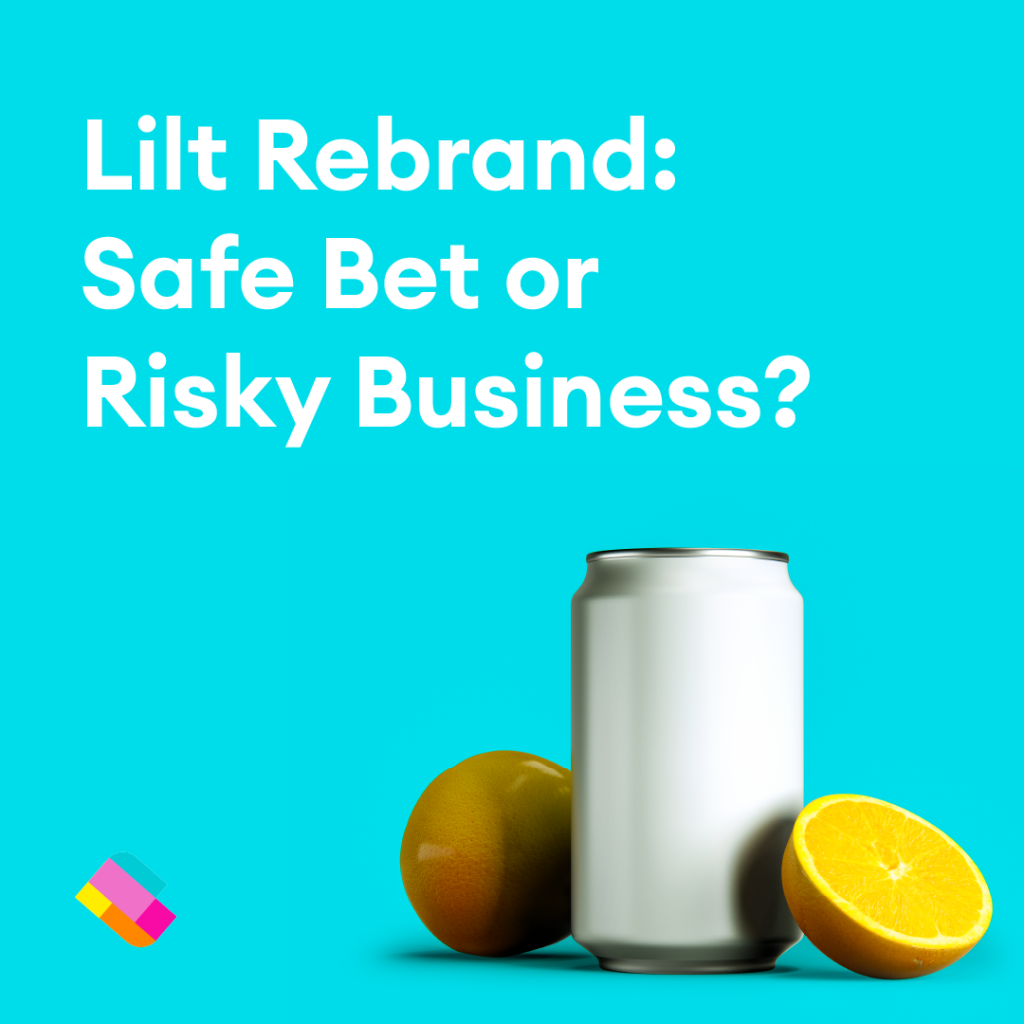In news that shocked the nation, Coca-Cola announced plans for a Lilt rebrand this week. The beloved drink will lose its iconic name and tropical design and be repackaged as Fanta Pineapple and Grapefruit.
For some, the announcement was totally unexpected. Other more eagle-eyed soft drink connoisseurs suspected something was afoot, noticing gradual changes to Lilt branding that made it increasingly similar to Fanta. Regardless, the news of the Lilt rebrand has been met with something of a mixed reaction. Despite Coca-Cola maintaining that the taste will be unchanged, many people are decrying the decision to axe a brand that has existed for nearly 50 years.
Let’s take a look at why Coca-Cola has decided to pursue this Lilt rebrand and discuss some of the risks and opportunities involved.
Why Rebrand Lilt?
Lilt was first launched for consumers in the UK, Ireland, Gibraltar, and Seychelles in 1975. It fast became a popular drink, with sales driven by marketing and advertising campaigns featuring iconic characters such as the Lilt Man and the Lilt Ladies, who touted the drink as a new, unique taste of the Caribbean.
Lilt holds a special place in the hearts of many consumers, with sentimental and nostalgic significance as a result of these successful advertising campaigns. However, as time went on, Lilt’s popularity began to wane. According to data collected by YouGov, Lilt was liked by 52% of surveyed participants, and ranked as the 28th most popular beverage in the UK, as of Q2 2022.
When compared to other Coca-Cola products such as its flagship Coca-Cola drink and Fanta, which rank as the sixth and fifth most popular UK beverages respectively, Lilt certainly could be doing better, and this decline in popularity is likely a major influencing factor driving the Lilt rebrand. By bringing Lilt into the Fanta family, Coca-Cola executives will be hoping it can benefit from association with a more widely recognised brand name.
The early Lilt adverts were successful but could be considered insensitive or even offensive by today’s standards, using stereotypical Caribbean tropes to convey a sense of the exotic. Modern consumers are increasingly diverse and attuned to issues of inclusivity and social justice, brands that are deemed to be appropriating marginalised cultures or being racially insensitive are quick to come under fire, and could find themselves being cancelled. While Coca-Cola is too big to ever be truly cancelled, an awareness of these shifting consumer attitudes could have also contributed towards the Lilt rebrand.
What are the Risks?
By choosing to move ahead with the Lilt rebrand, Coca-Cola is killing off a household name that has endured for nearly half a century. Doing so might offer some logistical advantages, by incorporating the product into the existing Fanta brand, but it could have a detrimental effect and drive existing customers away.
Perhaps the best example of a rebranding gone wrong comes from Coca-Cola itself. In 1985, spooked by the growing success of rival Pepsi, Coca-Cola took drastic action, reformulating and rebranding its flagship product into what became known as New Coke. The response couldn’t have been worse, sales of New Coke were flat and the company’s share price plummeted. Fans of the original drink were incensed and even took to the streets to protest. Just 79 days after New Coke hit the shelves, Coca-Cola rowed back the decision and confirmed that the original drink would return.
What this demonstrates is that tampering with a well-known and trusted product can have disastrous consequences. Unlike the New Coke debacle, the Lilt rebrand won’t change the drink’s taste, but consumers could still feel angry at the loss of such a recognisable brand.
What about the Opportunities?
When done correctly, a rebrand can be the perfect way to boost lagging sales and reinvent a brand or product in the eyes of consumers.
McDonald’s underwent an enormous rebranding process in the early 2000s. Motivated by negative media attention and a shift in consumer opinion on health and fitness, the company modernised its in-store locations and added healthy options to its menus.
This was a risky move; McDonald’s is one of the world’s most well-known brands. However, the decision paid off and the company has successfully repositioned itself in the market, it now offers a more varied menu with healthier options and its restaurants are more accessible and suitable for a broader demographic.
This is an example of rebranding done right. By carefully assessing and evaluating current market trends, McDonald’s was able to rebrand successfully and has seen continued success as a result, with forecasted annual growth of around 10.6%.
The Lilt rebrand is by no means as extensive or extreme as the previous examples, but getting it right is still incredibly important. If it’s done correctly, Coca-Cola will have the chance to boost the sales of a product that would appear to be on the decline. What’s more, the Lilt rebrand will incorporate the product into the existing Fanta group of drinks, which could work to further strengthen what is an already successful brand name.
What to Look for in a Branding Agency
Many companies will use in-house teams to spearhead and oversee a rebranding strategy. However, it can often be far better to work with a specialised branding agency. Getting an outside perspective can help you pick up on things you would otherwise have missed, it can give you a more detailed overview of your strategy, allowing for issues to be quickly identified and addressed.
When looking for a branding agency to work with, pay attention to their portfolio. While experience of working with brands similar to yours is helpful, it’s also important that they have worked on a diverse range of different projects. This demonstrates their versatility and ability to adapt to new challenges and creative briefs.
Conclusion
Will the Lilt rebrand go the same way as New Coke? Or will it be as successful as McDonald’s? It’s difficult to predict, consumers could be furious at the loss of a beloved drink, or they could embrace the Lilt rebrand and contribute to the revitalisation of an ailing product.


